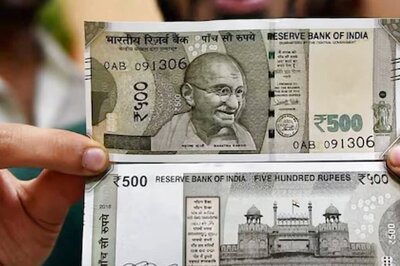
views
With Reliance Jio introducing its JioFiber service, we are witnessing a similar trend in the industry that happened a couple of years ago with the arrival Jio mobile network services. Almost every player is introducing offers left right and center to counter JioFiber, which has become a major threat.
According to an HSBC global report the rapid increase in the usage of wireless internet directly implies a higher adoption and a greater need for wireline internet. To add and maintain its customer reach, players want to make sure that they are able to offer internet-based content on TV alongside linear TV content.
This is being done in three ways:
The easiest method is to provide it using direct wireline broadband internet with a smart set-top box that offers online content as well as linear TV content. This is what Airtel is offering under the Xstream brand, ACT with its ACT 4K Stream Box, and some cable operators like Den, Hathway, etc.
The second way is what Reliance Jio is doing by offering a wireline internet with a smart set-top box offering access to internet content, but not linear TV content.
Adopted by some DTH operators like Tata Sky and Dish TV, the third way is to just offer streaming devices like Binge or the Xstream stick which in the end rely on an existing wireline internet connection at home.
But who’s going to benefit from these? Well, the research suggests that none of the wireline internet providers are offering cheap rates to attract customers. Currently, the penetration of wireline internet in India is considerably low at 21.7 million subscribers as of March 2019 which is a total compound annual growth rate of 3.2 percent in the last five years. Wireless internet subscribers, on the other hand, are 615 million. About 57.2 percent, 12.4 million out of 21.7 million, are BSNL customers, while Bharti Airtel is at second position with 2.4 million or 10.9 percent subscriber share.
Now wireless data usage per subscriber per month has increased 6.6 times from 1.1GB to 7.6GB from 2014 to 2016 and it is notable that more than 80 percent of OTT consumption at present is done on mobile phones. The ongoing growth of wireless internet usage along with the increase of internet-based economies, the hunger for more internet usage will keep on growing, which in turn will lead to a need for wired internet. But considering the price point of Rs 500 and above is much higher compared to what consumers can pay for the same service via other mediums. The monthly average revenue per user during the Q4FY19 for mobile usage was Rs 72. On the other hand, the monthly average linear TV bill is in the range of Rs 250-350.
Mass adoption of wireline internet is still far away and it is expected that subscribers will look for bargain offers at a minimal increase in cost and think about switching depending upon speed, data, OTT apps, and so on. The biggest loser will be the DTH
players that rely on wireline internet connection of other operators. For that matter, BSNL currently has the highest share of 57.2 percent in the existing wireline market will also lose the most from existing offerings. Cable operators offering wireline broadband connections will gain the most.




















Comments
0 comment